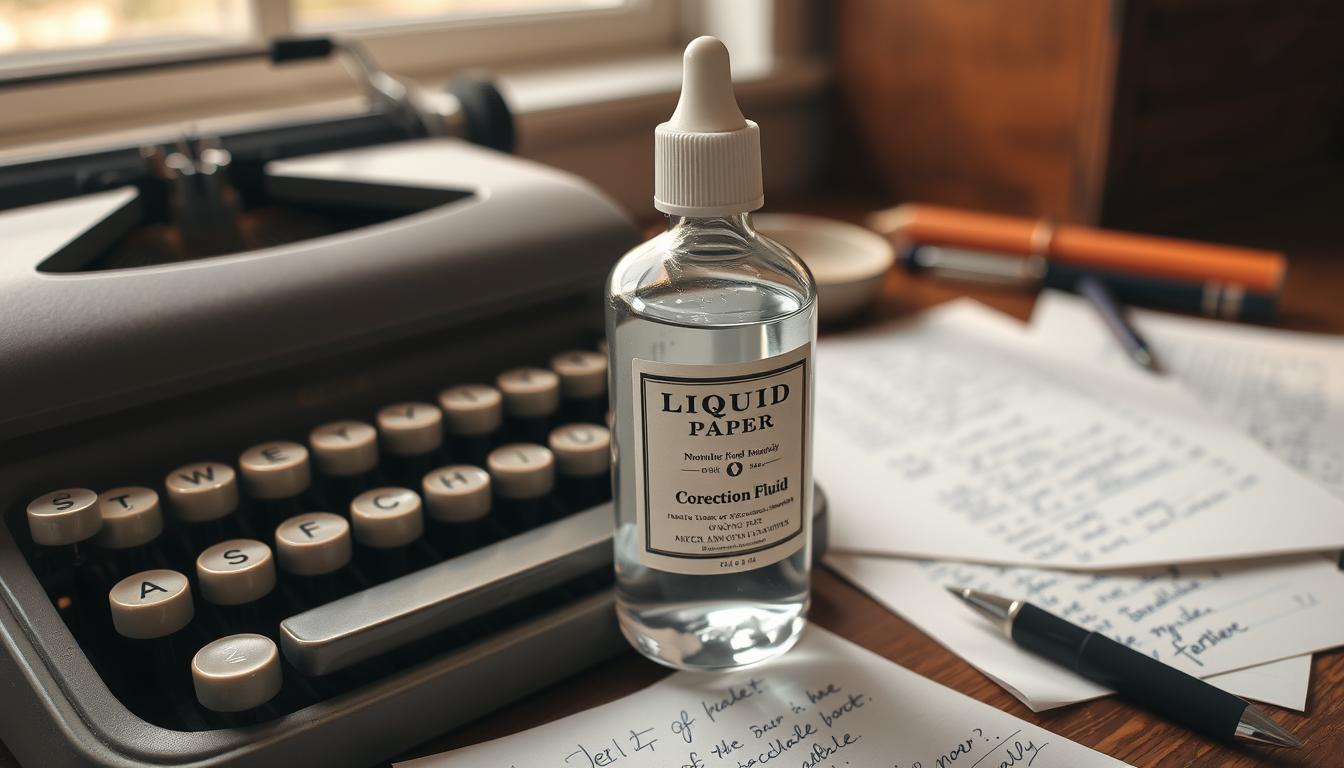Discover the inspiring story of Bette Nesmith Graham, a single mother and secretary who became the inventor of Liquid Paper, revolutionizing correction fluid forever. Ever wonder how a simple mistake led to a huge invention? In 1951, Bette Nesmith Graham, a Texas secretary, created Liquid Paper. This correction fluid, made in a kitchen blender, changed office work forever. It became key for secretaries and writers everywhere. Graham’s journey from a single mom to a successful inventor is inspiring. Her story shows the power of innovation and hard work. Her invention helped many women in business. What began as a secret recipe in her desk drawer became a global business in Dallas. At its height, the company made 25 million bottles of Liquid Paper a year. This correction fluid was so popular, it changed office culture and led to other products. Key Takeaways The Early Life of Bette Nesmith Graham Bette Clair McMurray was born in Dallas, Texas. She lived in a time when women had few choices. Yet, she broke free and made her way. Growing Up in Dallas Dallas was a big influence on Bette. The city was full of charm and new chances. It helped shape her hard work and creativity. A Youthful Union Bette married Warren Nesmith, her high school love. Their marriage, though short, shaped her future. Embracing Single Motherhood After her divorce, Bette became a single mom in Texas. Raising her son on a secretary’s pay was tough. But it sparked her famous invention. Year Event Impact 1951 Invention of Mistake Out First form of correction fluid 1956 Founded Mistake Out Company Start of a business empire 1967 Company growth Reached million-dollar status Bette’s journey from typist to entrepreneur is inspiring. Her story shows that continuous innovation can lead to great success, no matter the obstacles. In every challenge lies an opportunity. Bette Nesmith Graham turned her struggles as a single mother into a million-dollar idea that changed offices worldwide. A Secretary’s Struggle with Typos As an executive secretary at Texas Bank and Trust, I battled typos every day. The electric typewriters were amazing but tricky. I’d often look at smudged carbon ink, feeling frustrated. Accuracy was key in my job. Every document had to be perfect, showing our chairman’s professionalism. But even the best typists made mistakes, and fixing them was hard. The carbon ribbon was tough to work with. Erasing mistakes left ugly smudges. I knew we needed a better way. Little did I know, my struggle would lead to a big change in office work. “Every typist dreams of error-free documents, but with these new machines, it felt like an impossible task.” Secretaries everywhere faced similar problems. The need for a good correction method was clear. When correction fluids came out, offices quickly adopted them. By 1979, when I sold Liquid Paper to Gillette, we made 25 million bottles a year. That’s a lot of fixing typos! Year Milestone Impact 1950s Introduction of electric typewriters Increased typing speed, but also error rate 1956 Invention of “Mistake Out” First step towards easy error correction 1979 Sale of Liquid Paper to Gillette $47.5 million deal, 25 million bottles produced annually Looking back, I’m thankful for those tough times. They pushed me to find a solution for millions of office workers. It shows that our biggest challenges can lead to our greatest successes. Pricing our product right made it available to everyone who needed it. The Birth of an Invention In the 1950s, I was a secretary dealing with typos all day. This frustration sparked a creative idea. I remembered how painters covered mistakes with new paint. This idea changed office work forever. Inspiration from Painters Watching artists, I saw how they used tempera paint to hide errors. This idea excited me. I thought, “Why can’t I use this for typing mistakes?” This thought started my journey of trying new things. Kitchen Experiments I turned my kitchen into a lab. I mixed tempera paint with different things in my blender. I wanted to find a way to cover mistakes without harming the paper. After many tries, I found it. I made a quick-drying liquid that could be applied with a brush. The First Batch of “Mistake Out” I named my discovery “Mistake Out.” It was a huge success. My coworkers wanted it too. By 1956, I started the Mistake Out Company in my garage. I had no idea it would become a global product, rivaling IBM and Remington. “Necessity is the mother of invention. My need for error-free documents led to a solution that would help millions of office workers.” From Kitchen to Company: The Liquid Paper Journey I was amazed as Liquid Paper Company grew from a small kitchen idea to a big name in office supplies. It all started when Bette Nesmith Graham applied for a patent in 1958. She finally got it in 1968, marking the start of a product that changed typing forever. As more people wanted it, Graham’s garage turned into a big factory. By 1979, they were making 25 million bottles every year. They also opened factories in Toronto and Brussels to sell worldwide. The product’s success came from fixing a common problem: making typing mistakes easy to correct. This made Liquid Paper a must-have on desks everywhere. Its impact was so big, it even led to new technologies in other areas. Year Milestone 1958 Patent application filed 1968 Patent granted 1979 25 million bottles produced annually 1980s International expansion (Toronto and Brussels factories) The Liquid Paper Company’s growth showed Graham’s hard work and vision. Starting small, they became a big factory. Their journey shows how a simple idea can become a key office supply. Bette Nesmith Graham: The Inventor Behind Liquid Paper Bette Nesmith Graham’s journey is truly inspiring. She managed to balance being a mom and an entrepreneur. Her story shows how hard work can beat big challenges. Balancing Motherhood and Business Graham was a single mom to Michael Nesmith, who later became famous with The

